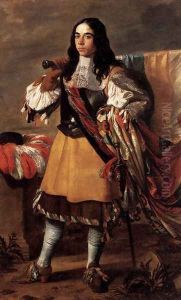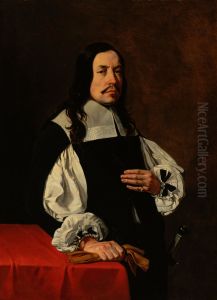Vigor Boucquet Paintings
Vigor Boucquet was a Flemish painter recognized for his contributions to the Baroque period, particularly in the realm of portrait and genre painting. Born in 1619 in Veurne, located in the Spanish Netherlands (present-day Belgium), Boucquet was part of a family deeply rooted in the artistic tradition; his father, Jan Boucquet, was also a painter, and his brothers Jan Baptist and Francis were also involved in the arts.
Boucquet's early life and training remain somewhat obscure, but it is believed that he was initially taught by his father. He later became a master in the Guild of Saint Luke in Veurne in 1642, which marked the onset of his professional career. The Guild of Saint Luke was the association of artists and craftsmen in many cities in Europe, and becoming a master within the guild was an important step for any artist of that era.
Throughout his career, Boucquet developed a reputation for his skill in depicting intricate details and his ability to convey the psychological depth of his subjects. His portraits often showcased the wealth and status of the individuals he painted, often through the use of rich textiles and elegant poses. While he was primarily known for his portraits, he also produced a number of genre scenes that depicted everyday life with a similar attention to detail and narrative quality.
Unfortunately, like many artists of his time, Vigor Boucquet did not gain widespread fame during his lifetime, and his works were often overshadowed by those of his more famous contemporaries. Nevertheless, his contributions to Flemish art have been acknowledged by art historians, and his works are a part of several European art collections.
Vigor Boucquet passed away in 1677 in Veurne. His legacy lives on through the paintings that survive him, which continue to be studied and appreciated for their craftsmanship and historical value within the context of 17th-century Flemish art.

